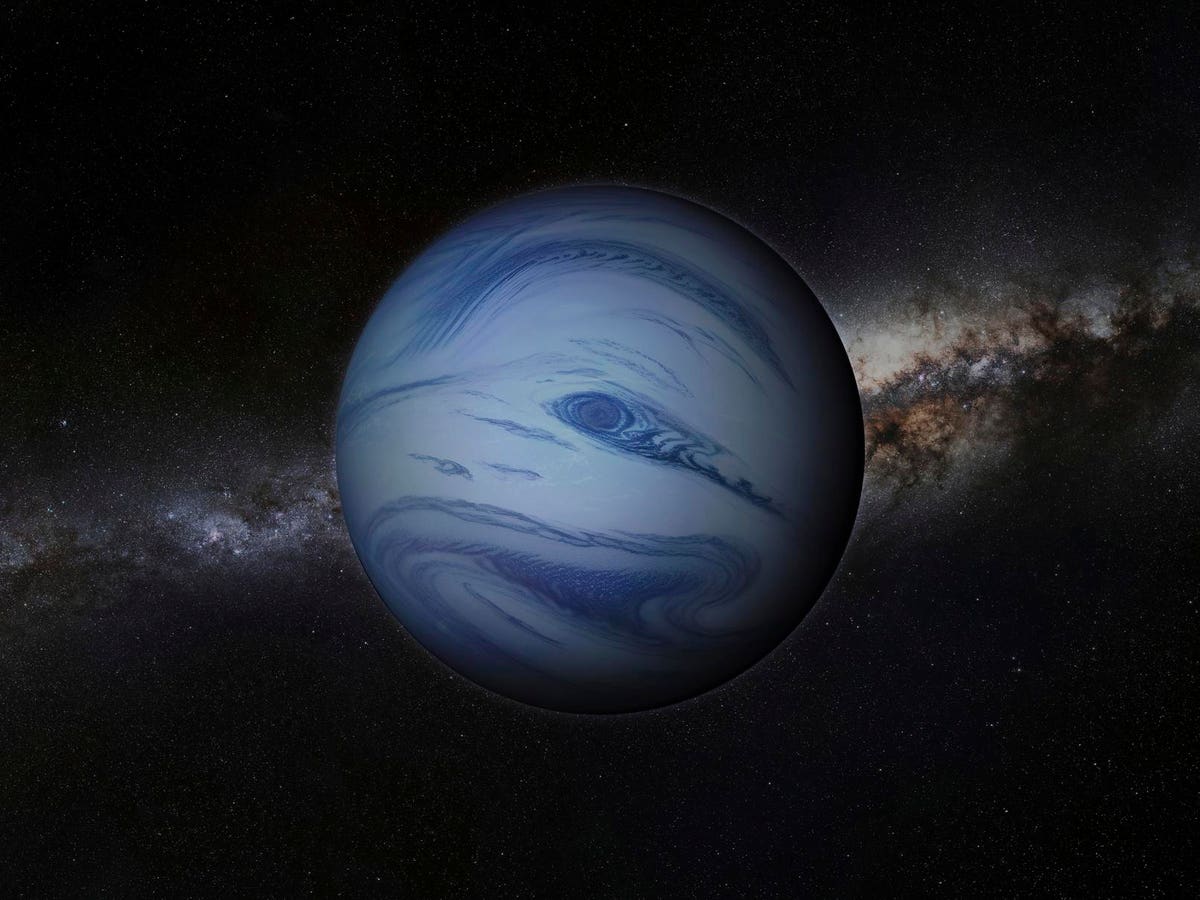Artist’s impression of a sub-Neptune planet.
Most exoplanet hunters chase biosignatures the way bird dogs chase the scent of a quail. But in a talk at the European Astrobiology Institute’s recent BEACON 25 conference in Reykjavik, astrophysicist Kevin Heng espouses the newfound notion of Geoastronomy. The idea is that the long road to finding signatures of life (biosignatures) on a planet beyond our solar system runs throughan epoch dominated by an interdisciplinary merger of Geology and Astronomy.
The aim is to make sure that we first spectroscopically identify geological false positives in the atmospheres of extrasolar planets that are totally unlike those in our own solar system. These so-called sub-Neptunes are neither planetary fish nor fowl. They’re neither terrestrial nor gaseous and range in size from about four to ten Earth masses.
If we don’t understand how these sub-Neptunes’ chemical species are abiotically generated by the planet’s geology, then when we detect them in an exoplanetary atmosphere, we could have a false positive, Kevin Heng, professor of astrophysics at the Ludwig Maximilian University of Munich, tells me in Iceland.
This is a problem that’s not likely to abate anytime soon. That’s because, as yet, there’s no reliable formula for detecting extrasolar signatures of life (or biosignatures).
Some 40 of these bizarre, geochemically-active sub-Neptunes are currently being studied observationally.
But without a firm understanding of the geochemical underpinnings of a rocky planet, we cannot possibly begin to understand whether some purported disequilibrium chemistry can be attributable to a biological process, Stephen Mojzsis, a geologist at the University of Bayreuth in Germany, tells me via email.
Both Heng and Mojzsis are leaders in a 10-million-euro, six-year European Research Council-funded project dubbed ‘Geoastronomy.’ The aim is to unite the disciplines of astrophysics and the geosciences in an effort to comprehend both the chemistry and physics of rocky exoplanets.
Fear Of False Positives
In his recent Iceland presentation abstract, Heng challenges his colleagues by asking: If we cannot understand hot, geologically active exoplanets without life, what chances do we have of understanding a full-blown planetary biosphere from far away?
Again, this clearly is an area of astrobiology that needs attention. There are potentially hundreds of such sub-Neptunes in the local galaxy, some of which orbit their parent stars in only a few days.
And even though they have puffy hydrogen-rich atmospheric envelopes, these envelopes make up just 1% of their mass. Their cores, however, are thought to be rocky and molten, which probably means that they are geochemically active.
High Pressure
Their cores are basically molten rock with temperatures of a few thousand degrees and with pressures 10,000 times that of Earth’s surface.
At these pressures, there’s probably no life, and matter behaves in an unfamiliar way, so that the distinction between gases and liquids are not so distinct and matter is in this strange, exotic mix, says Heng.
Too Much Gas?
At some point you add so much hydrogen to this core that its hydrogen doubles the size of the core which means that the real extent of the core is the same as the real extent of the atmosphere, Heng notes in his conference talk.
Arguably, the most famous sub-Neptune is K2-18b, an exoplanet which recently made global headlines due to the claim that dimethyl sulfide had been detected in its atmosphere. But Heng doesn’t buy that explanation.
I find K2-18b utterly uninteresting because it’s a red herring; we’re going from physics to biology when there’s so much geology we can learn, says Heng. The sample of exoplanets from which we can learn geology is vastly bigger than the sample of so-called habitable exoplanets, he says.
Science can also be impatient.
Most people want to make the leap from physics to biology, but let’s take what nature is teaching us, says Heng. False positives come from geology because rocks use the same gases that metabolism uses, he says.
A Habitability Skeptic
Because we have yet to detect any real Earth analogs; we have a sample size of one for life, says Heng. All of the so-called habitable zone planets we have found are based on the assumption that they have the same atmosphere as Earth, and we do not know that they do, he says.









